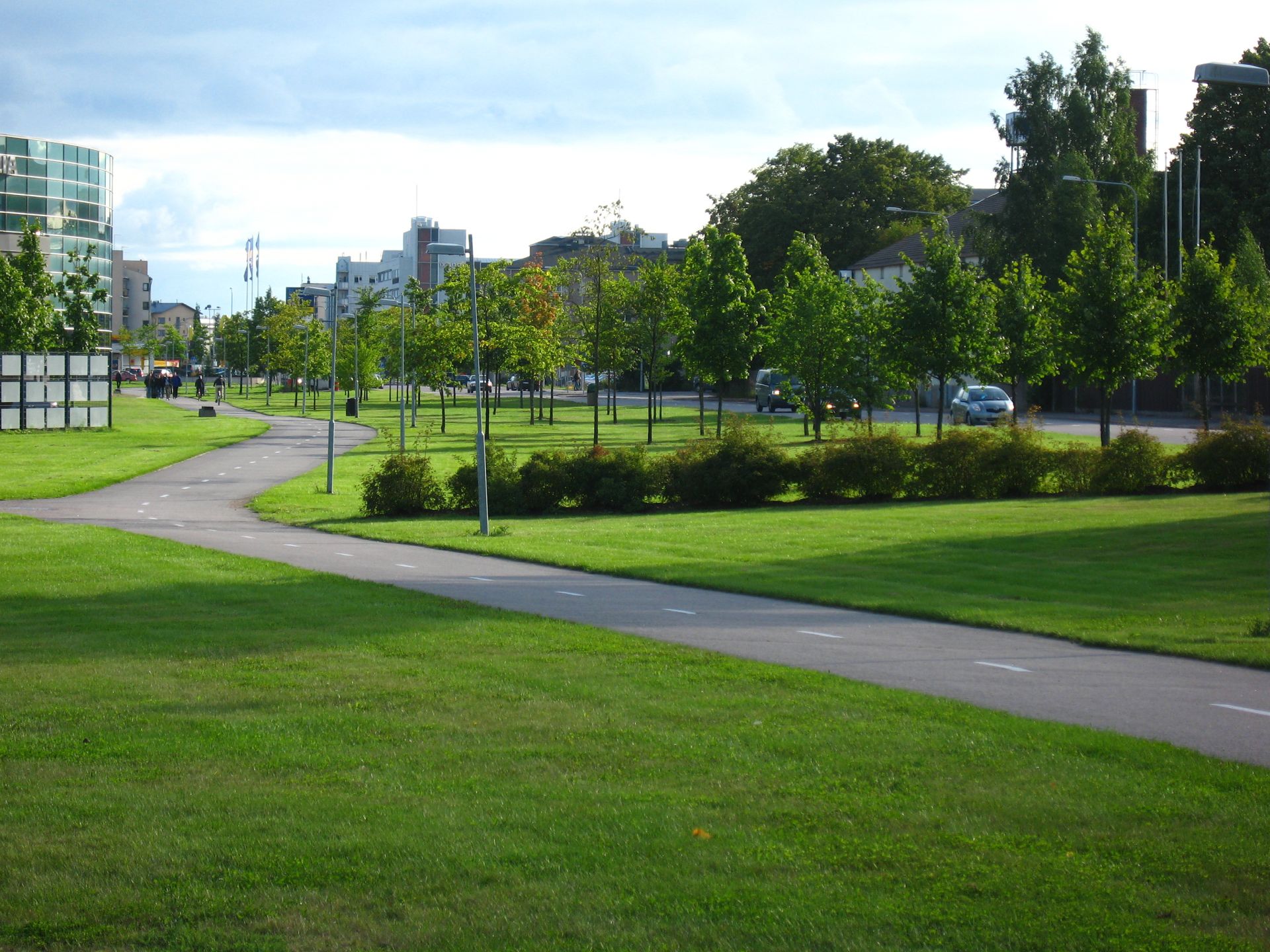From the early Middle Ages to 1809 Finland was a part of the Swedish Realm. In the 13th century new colonists probably moved to the Finnish coast from Sweden. The eastern part of the realm was time by time more integrated in the realm. In the late 15th century there were noble estates also in Herttoniemi. The nobles were freed from taxes and could accumulate wealth.
There are not many sources about Herttoniemi from the Middle Ages. I praxis the medieval families lived like wealthy farmers in the villages and on the estates in Herttoniemi. People mainly farmed the land, held farm animals and went fishing. The oldest village in Herttoniemi is most likely situated near the present Asentajanpuisto. The parcels were probably filled with wooden houses and buildings for the livestock. The area was close to the Big Coastal Road that stretched from Turku to Viipuri. This is also a strategic place from which the searoutes and bays can be controlled.

Asentajanpuisto in Herttoniemi (Helsinki). Photo: Arto Alanenpää - CC BY-SA 3.0, Wikimedia commons.
The role of the wife in the household was mostly to be in charge of the housetasks, see that the livestock was cared for and all the people living and working here was fed. The household included the family, possible relatives and all the servants. In the middle of the 14th century a certain Margareta is mentioned to be from Herttoniemi (Hertonäs). She might have been born around the year 1424. “Margareta in Härtonäs” married Lasse in Gästerby (in Sipoo) and they had three children: Peder Larsson, Erik Larsson and Margareta Larsdotter. At this time they did not use surnames, but rather patronyms. The daughter to “Margareta in Härtonäs”, Margareta Larsdotter , later married Lars Mattson in Sarvlax. In the late 15th century Lars was relieved from taxes (became a noble) for his property in Sarvlax and thus Margareta from Hertonäs became the “forgrandmother” to the noble family Creutz that owned Sarvlax manor up to the 18th C. Today the family still own Malmgård manor that is neighbour to Sarvlax (in the present Pernaja). Margareta (Margarete, Greta, Margit, Mariette) was a common name in Helsinga in the Medieval period and Saint Margaret of Antioch (maiden and martyr, d. 304) was a popular saint all over the Baltic region.
From time to time “Margareta in Härtonäs” is believed to be a member of the family Jägerhorn. The noble family Jägerhorn lived in Herttoniemi (possibly) already from the late Middle Ages to the late 17th century. This is why different people easily could get mixed as they derived from the same place. It is still probable that “Margareta in Härtonäs” is not related to the family Jägerhorn. Her parents are unknown. But it is possible that Margareta could have belonged to the elite in the area, because Herttoniemi most probably was noble land already in the Medieval period.
Herttoniemi or Hertonäs in Swedish, is mentioned in the sources for the first time in 1405 (about two decades before Margareta was possibly born): a lay judge in Porvoo’s court of law is called “Laurens Hertoghe”, possibly based on his home. The word (Swe. hertig = duke) is still a common surname in this era and it is at least not referring to the Swedish word either, but it could refer to a man of wealth, a “common duke”. Still the surname could be a relict from two centuries earlier when royalties such as dukes probably led the colonisation of the Finnish coast.
In 1555-56 Hertugenäs is clearly mentioned as a noble estate that belonged to a man named Matz Mortenson, sir Karl (the vicar of the parish that most probably had inherited his lot from his father) and the widow Walborg. What more did occur to them in the time of king Gustavus Vasa? -We will write more about that another time.
Sources:
Backman, Sigbritt 2016: Hertonäs gård - från säterier till museum. SOV: Helsingfors.
Margareta, i Härtonäs, Geni public profile, (last seen 7.3.2020).
Salminen, Tapio 2015: Medeltiden i Vanda och Helsinga socken. Red. Eva Ahl-Waris, Andreas Koivisto & Tapio Salminen. Vanda stad: Vanda.
